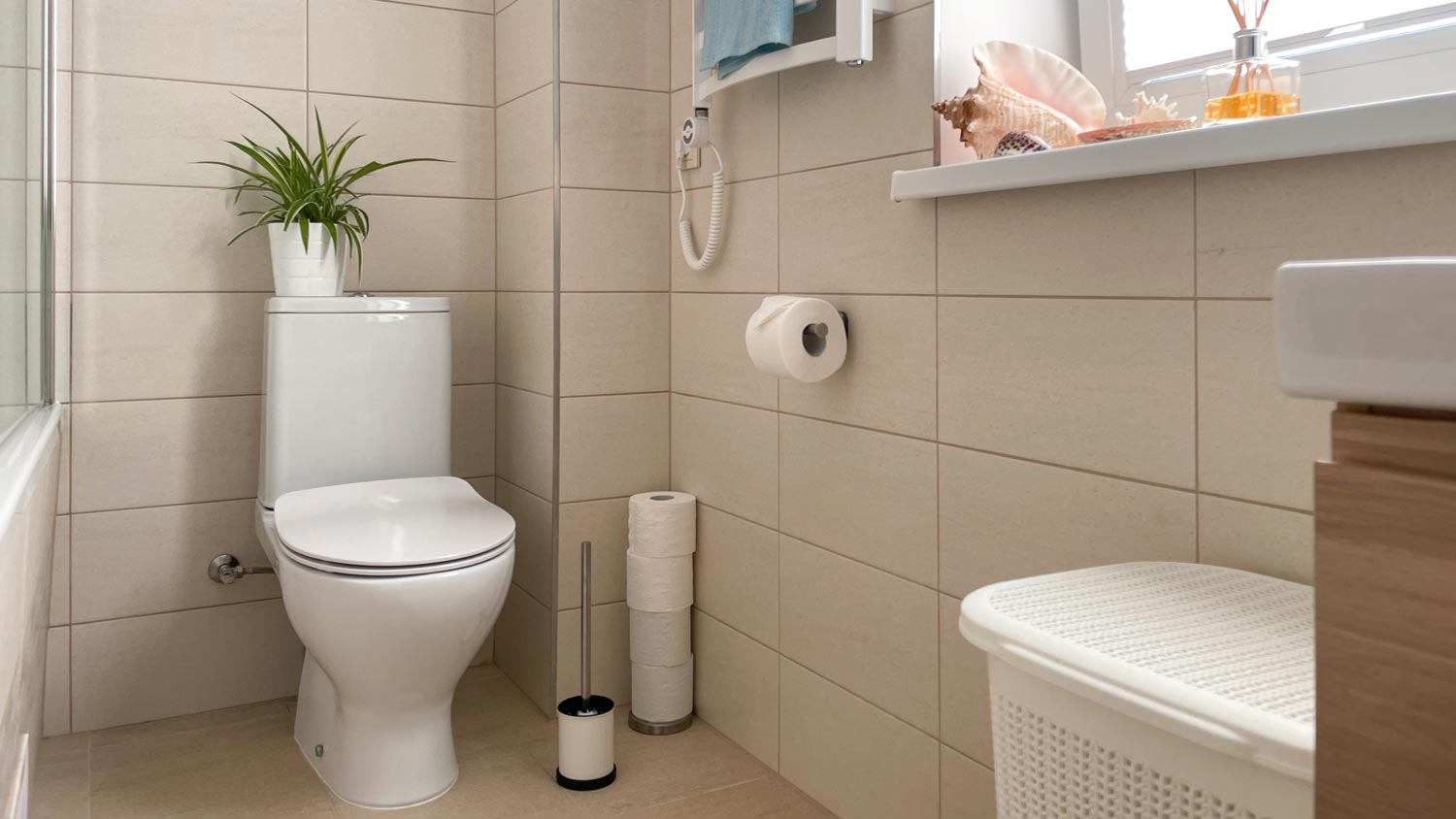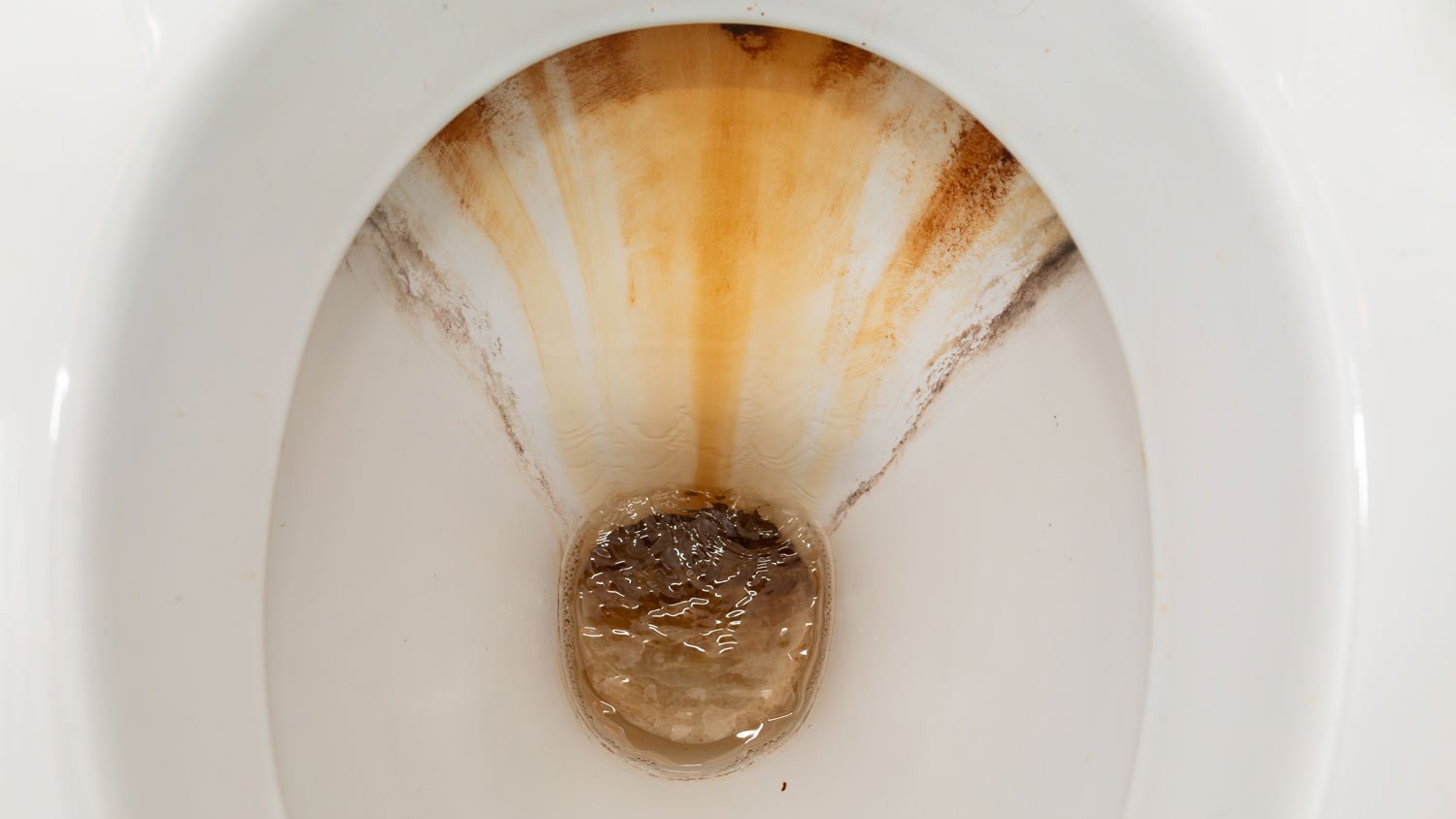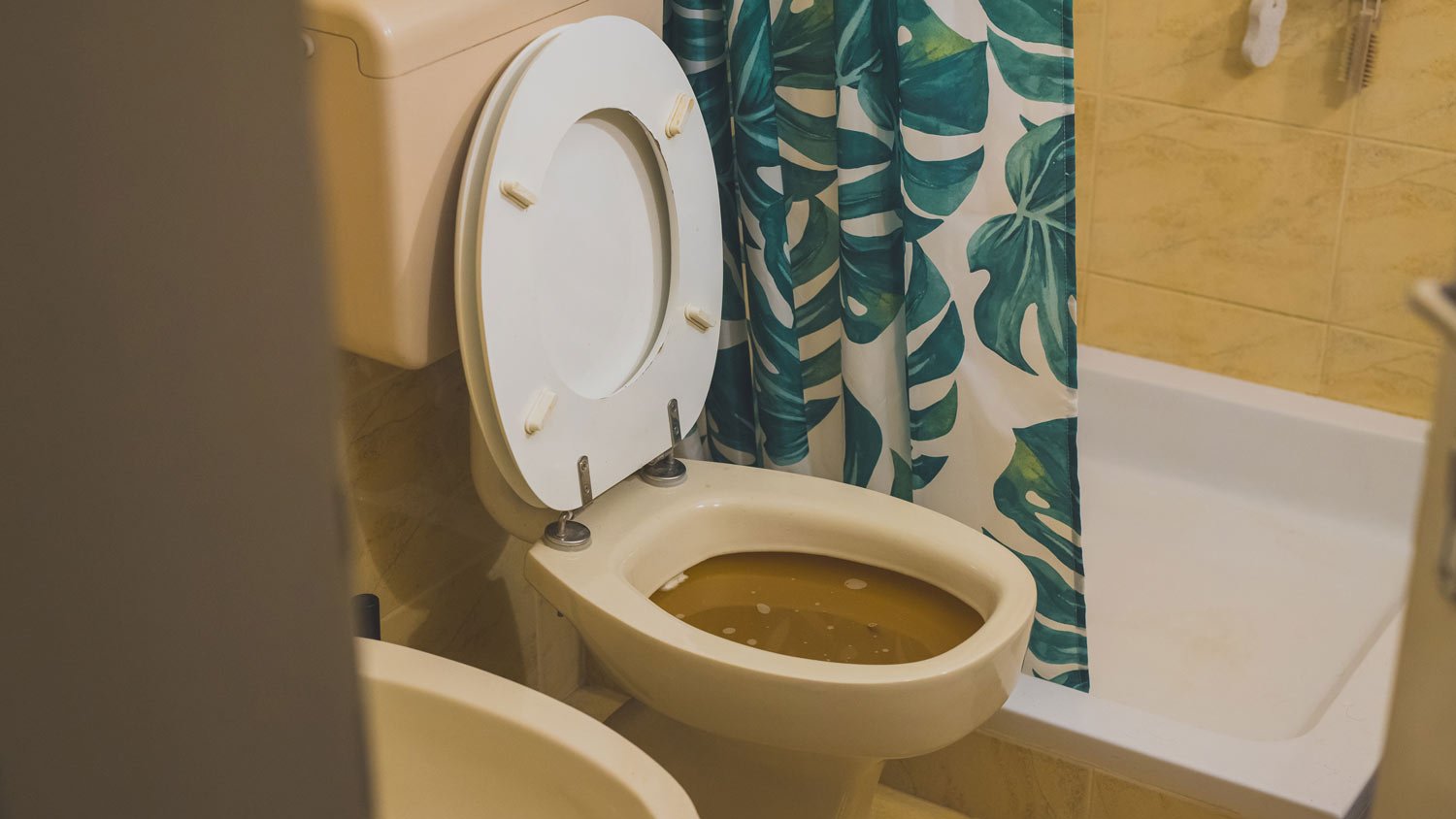
The cost to cap a gas line is relatively low, as plumbers can handle the job in roughly an hour. We break down cost factors and DIY considerations.
Let’s get to the bottom of this


Brown water in the toilet bowl could be caused by poor cleaning habits.
A dirty toilet tank, rusty pipes, and utility maintenance turn the water brown.
Call a pro if you suspect the problem is rusted pipes or a water source issue.
You clean your toilet regularly—or semi-regularly—but the water is still brown. If this scenario sounds familiar, you’re probably wondering why your toilet water is brown and what you can do about it. Dirty toilet water can be an easy fix (cleaning) or a sign of a bigger plumbing problem (rusted pipes). Take a look at four reasons why your toilet water is brown and how to fix it.
Sometimes, the simplest explanation is the most likely. If you notice that your toilet water is brown, it may simply be because you haven’t cleaned the bowl in a while and it’s not the water that’s dirty but what it goes into. When the toilet isn’t regularly cleaned, bacteria and other residue can result in brown deposits over time.
Grab a toilet brush and start scrubbing! You can use a toilet bowl cleaner to break down the accumulated film and scrub around the bowl and under the rim. Flush and assess the cleanliness of the toilet bowl. For stubborn stains you may need to use bleach or baking soda. Repeat the cleaning process until the toilet bowl is back to its original color.

Even if you clean regularly, rust or sediment in the toilet tank can turn the water brown. Every time you flush, these particles are released and discolor the water. The sediment or rust can also come from old or corroded toilet parts.
If you can narrow down the source of the rust—the flapper, for instance—you can replace it pretty easily. Alternatively, a local plumbing repair professional can do this task for you relatively quickly. If the tank itself is the problem, you can potentially replace it. This is a job for a pro as they will ensure the connections are done right and everything is sealed properly.
While we typically don’t give much thought to the plumbing system beyond the toilet, the plumbing pipes are working behind the scenes to whisk away waste. More modern plumbing systems often use PEX or PVC pipes, which don’t rust, but older homes often used metal pipes that can corrode and rust over time. The rust will flake off and get into the water that flows into your toilet bowl, making the water brown.
To reduce the amount of rust in the toilet bowl, run cold water through multiple faucets throughout your home to flush out rust. Note: this isn’t a long-term solution. Rusty pipes will continue to be susceptible to corrosion, which will keep ending up in your toilet bowl. The best, but most expensive and most labor-intensive solution is to replace the plumbing pipes.

An issue with the main water supply is a less likely cause and if it does happen it is usually temporary. It is possible that local maintenance work can dislodge rust from pipes, allowing it to flow into your toilet. In some cases, weather conditions, such as heavy rainfall, can cause brown water.
There’s not much you can do to fix the issue of brown water if it’s coming from the main water source. But the good news is that it’s likely a temporary issue. If you have brown toilet water for a few days, and you’ve tried other solutions to remedy the problem, contact your water provider to alert them of changes in the water quality.
Seeing brown water in your toilet bowl can cause concern, but you may solve the problem on your own. Cleaning the toilet bowl and checking the tank and toilet components are good places to start. If you suspect the problem is in the pipes or with the water source itself, call a pro to discuss your concerns.
From average costs to expert advice, get all the answers you need to get your job done.

The cost to cap a gas line is relatively low, as plumbers can handle the job in roughly an hour. We break down cost factors and DIY considerations.

Pipe leak repair costs depend on the location and severity of the leak, as well as the type of pipe being replaced. Use our guide to price out repair work.

We’ll cover the cost of replacing a shower or bathtub drain, whether you can tackle this repair yourself, and what other projects to consider along the way.

If you're concerned about the water quality at your home, it may be time to install a water purification system. Different types of water purification can offer different benefits for removing debris, particles, dirt, bacteria, and viruses from your water.

Need to stop a plumbing leak quickly and minimize water damage in your home? Buy yourself some time with these temporary fixes for a leaking pipe.

You never know when learning how to unclog a toilet will come in handy. Get to know these eight methods for the next time things stop flowing.